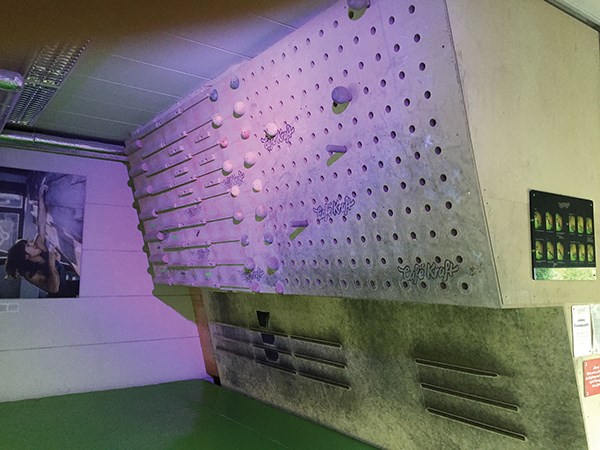Think back, way back to those early days in Grade 8, nervously walking around the gym hugging the perimeter walls for fear that someone would smell your ripe, unwashed gym uniform. As you lurch awkwardly along, you glance up at the chin up bar and thick ropes which you had to climb for a fitness test and finally the pegboard in the corner of the hall. Oddly, no one ever seemed to use that piece of fitness equipment.
The pegs, still inserted into the bottom holes, were taped with white cloth athletic tape now yellowed with old sweat, chalk and skin. What was the pegboard good for and who were its citizens, you wondered?
At its most basic, the pegboard represented a way of training one-arm muscular strength through the pulling up, locking off, reaching, stabbing and repeating of alternating pull-ups, all without the aid of your feet. I’m not sure if it was birthed from a gymnastics background or from a meeting between the woodwork teacher and a sadistic physical education teacher. There was at least one where I went to school in Vancouver, but I never used it and unfortunately never quite made the ideological link between it and climbing when I first began climbing in Grade 11.
As luck would have it, the pegboard is making a revival at the moment in some of the new climbing gyms in Europe and the U.S. The old pegboard, however, has little in common with its new brother, now appearing as a strength-training tool for climbing. The new boards in these gyms are wider, taller and consistently overhung, with a mosaic of holes to trace strenuous moves with the pegs. The pegs aren’t the only interface now, either. Some gyms have added slopey wooden balls with which to climb, making the effort to hold on even greater.
The pegboard gives climbers’ fingers a break and means they can focus more intently on the muscular nature of the moves. Moves have to be done more statically so that the peg can be placed into the hole before moving on. In this time of apps and high-tech tools administered by coaches via Skype, it’s nice to know that a simple wooden board and set of two pegs can be used effectively to make you beastly strong.
I’m writing about the pegboard for three reasons. One, it’s a unique and ageless training tool making a comeback in the modern climbing world. Two, Bill Rizun, teacher at Don Ross Middle School in �ϰ������ϲʿ�����¼����, still holds the unbeaten record of 68 moves up and down on the school’s board, and I’d love to inspire someone to take up the challenge. Three, Don Ross is opening up its new bouldering cave in a month or two and they need our help – yes, the community’s – to help make the cave as good as it can be.
The issue is holds and how much they cost. If you have a woody that is sitting idle and unused, your garage a clutter of skis, bikes and stand-up paddleboards, here’s an opportunity to liquidate your holds to a great cause. I’d say that holds of any sort are appreciated but positive edges, jugs and good footholds are most in need.
What will you be contributing to? Introducing climbing to a wide range of youth in B.C.’s largest and most extensive climbing area through exposure within the public school system. Youth growing up in �ϰ������ϲʿ�����¼���� should have the opportunity to learn about climbing and how it can enrich their lives.
Bill Rizun can be emailed at [email protected] and Don Ross Middle School is at 42091 Ross Road, �ϰ������ϲʿ�����¼����.




